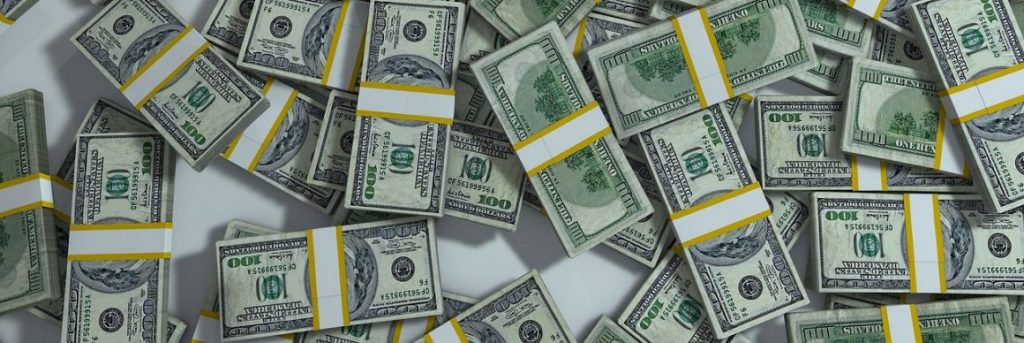The Rising MBA Student Debt

Getting your MBA isn’t cheap. In fact, according to Fortune, MBAs from the top 10 business schools alone walked away with a total of $317.4 million in graduate student loans last year. The main reason is the cost of attending school. Some top programs leave students with more than $100,000 in debt. Attending Cornell University can leave an MBA student with an average of $115,048 in debt.
MBA Programs with the Greatest Debt
The top ten programs where students can expect to walk away with the greatest debt:
- Cornell University—$115,048
- Duke University—$114,498
- New York University—$107,458
- Massachusetts Institute of Technology—$107,458
- Pepperdine University—$103,721
- University of Michigan—$100,611
- Chapman University—$100,518
- University of Virginia—$100,083
- University of North Carolina—$93,898
- Carnegie Mellon University—$93,267
Other top programs for student debt include Wharton ($122,370), USC ($118,088), and Dartmouth ($111,761). Even public universities are costly. The average UCLA MBA walks away with $88,654 in debt, and the average UC Berkeley graduate has $70,568 in debt.
The Cost of an MBA
The main issue is the rising cost of the MBA. The Financial Times compared tuition at the top 25 U.S. schools between 2006 and 2016. Over those ten years, tuition raised by 81% to $118,468, which doesn’t even include the cost of books, health insurance, and other living expenses. And at certain schools, such as MIT’s Sloan School of Management, MBA student debt rose as much as 25%—from $86,688 to $107,172—in just four years.
So, what does all this debt mean?
It has profound implications. MBAs with large amounts of debt are less likely to get married, to travel, or to choose a job without weighing the salary heavily. Avoiding MBA student debt is also why scholarships are more important than ever.
Paying for an MBA
Paying for your MBA doesn’t have to be impossible. There are a variety of strategies available to help students pay for their MBA (some include debt, and some don’t). The three primary sources of payment are:
- Graduate Student Loans: Probably the most popular method, student loans allow MBAs to put off paying for their program until after they’re earning enough money to pay for it. There are a few keys to remember:
- Make sure that your student loan payments won’t exceed 15% of your monthly income after graduating.
- Sign up for automated payments to reduce your interest rates.
- Consolidate or refinance to lower your interest rate and combine your payments.
- Go to the S. Department of Education for more information and advice.
- Scholarships: While financial aid is helpful, it’s even better to use a scholarship or fellowship to pay for your MBA. The good news is that scholarship amounts are increasing across the board. The top 25 business schools in the U.S. give out more than $220 million in scholarships annually. In fact, in many cases, the pool of money available for scholarships has outstripped the increased cost.
- Sponsorship: The third way to pay for your MBA is through sponsorship. Most often, this option is available to Executive MBAs and Part-Time MBAs who will continue working while pursuing their degree. At INSEAD, company sponsorship covers one in five students while at Stanford it covers one in ten.
Does MBA Student Debt Matter?
It depends, for graduates of Wharton, probably not so much. Though the average debt for a Wharton grad was $122,370, the average compensation package for a graduating MBA was $146,303, which means paying off over 100k in debt wouldn’t be that big of a problem.
And there are plenty of schools where the debt to salary ratio is even better. At the University of Wisconsin’s Business School, the average debt was $15,481 while the average first-year compensation was $114,694, meaning MBAs could pay off their loans in the first year.
Paying Off Your MBA Student Debt
The key to dealing with your MBA student debt is knowing how to handle it.
- Develop a Repayment Strategy: According to Daniel Roddick, the Director of Financial Aid at the Haas School of Business, who spoke to Business Insider, the first thing MBA grads need to do is develop a repayment strategy. A repayment plan can give new MBAs the tools and framework necessary to reduce monthly loan payments and to keep student loans from interrupting day-to-day life.
- Stay Organized: MBA student debt typically comes with a lot of emails, important documents, and information. The best thing you can do is stay organized and keep track of due dates, interest rates, and all the information you need.
- Prepay: MBAs who gain employment quickly and who earn large salaries would be served by paying more than the minimum monthly payment. However, make sure that it makes sense. If your student loan interest rate is 3% but your retirement investment pays 8%, pay the minimum on your loan and put your extra cash into retirement, instead.
